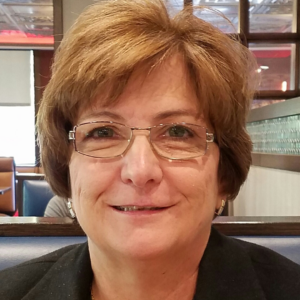Using fingertip receptors to improve memory
Memory loss results when Amyloid plaque builds up in the brain and impairs synaptic neuron connections. (Amyloid-β protein dimers isolated directly from Alzheimer’s brains impair synaptic plasticity and memory. Shankar GM, Li S, Mehta TH, Garcia-Munoz A, Shepardson NE, Smith I, Brett FM, Farrell MA, Rowan MJ, Lemere CA, et al. 2008.) To improve memory, the synapse connections must be strengthened.
Fingertip tracing exercises strengthen synapse connections using Braille like textures that indent into fingertip receptors under the skin of each fingertip. John Hopkins Krieger Brain Institute discovered this technology in 1995 (Handy Guide to Touch) and Esther Gardner research confirmed the technology in 2010 (Coding Sensory Information).
Brainpaths fingertip tracing exercises can improve senior memory loss
Fingertips’ indenting into 3,000 mechanoreceptors in each fingertip provides a superhighway to the sensory cortex of the brain, firing neurons and improving synapse connections just like Braille (Leah Ariniello, Society for Neuroscience, Washington D.C.).
Plasticity of the Brain was discovered in 1998 by Thomas Elbert, a Professor for Clinical Psychology and Neuropsychology at the University of Konstanz. Brain plasticity is the ability of the nervous system to adapt to changed circumstances and find new ways of learning, sometimes after an injury or a stroke, but more commonly when acquiring a skill. Experiments were conducted to determine whether adult brains have plasticity. The findings showed a superhighway from the fingertips to the brain. (“Brain Plasticity,” with Thomas Elbert, Radio National, January 1998). Repetition forms connections and with proper stimulation, synapses become stronger. While exercising the brain, electrical chemicals are sent out that make the synapse connections stronger and more permanent. (Brain Development, Karen DeBord, North Carolina Cooperative Extension Service).
As with muscle tone and cardiovascular fitness, use of the brain is required to prevent loss, explains Jay Giedd MD, in a Frontline interview on PBS. Cells and connections that are used will survive and flourish, while cells and connections not used will wither and die.
Researchers are unsure whether rewiring results from new connections or strengthening of existing connections. Scientists are, however, sure that the adult brain does, to some extent, rewire itself. This finding helps explain how learning occurs and may lead to ways of improving recovery from learning disabilities, stroke, and other brain disorders through special "brain exercises". One example given to develop new connections between brain neurons was learning to read Braille. (Brain Briefings, brain reorganization, Leah Ariniello, Science Writer, Society for Neuroscience, Dupont Circle, NW, Suite 500, Washington D.C., 20036).
“Simple finger movement can change the size of the area of motor cortex that controls specific finger muscles, and even alter its neural connections,” says Dr. Mike Ridding in “Rewiring the Damaged Brain.” “In blind Braille readers, the cortical area for the reading finger is much larger than for a non-reading finger; by developing a method of stimulating the pathways leading back to the brain from the affected muscles, we may be able to encourage the development and use of an alternative cortical area to that damaged by the stroke.”
Alzheimer's disease is a progressive disease with no cure and rising numbers. Alzheimer's creates brain lesions that accumulate in the brains of patients causing brain cells to die, resulting in memory loss, disorientation and a declining ability to handle everyday life. Although state of the art drugs may help to lessen and stabilize the symptoms they do not inhibit the loss of brain tissue. It is believed by researchers, even the brains of people with Alzheimer's who are very old may capable of producing new neurons in order to maintain established connections that encode long-term memories and enable a person to acquire new memories.
The costs of caring for people with dementia in the United States in 2010 were between $159 billion to $215 billion, and those costs could rise dramatically with the increase in the numbers of older people in coming decades, according to estimates by researchers at RAND Corp. and the University of Michigan, Ann Arbor. The researchers found these costs of care comparable to, if not greater than, those for heart disease and cancer.
The researchers also project skyrocketing costs, as the baby boom grows older; the Bureau of the Census estimates that the population age 65 and older will double to about 72 million over the next 20 years. Rates of dementia increase with age, and unless new ways are found to treat and effectively prevent it, national health expenditures for dementia could come close to doubling by 2040, as the aging population increases and assuming the rate of dementia remains the same.
"These findings reveal that the enormous emotional and physical demands of caring for people with dementia are accompanied by the similarly imposing financial burdens of dementia care," said Richard J. Hodes, MD, Director of the NIH's National Institute on Aging, which funded the analysis. "The national costs further compel us to do all we can to find effective treatments for Alzheimer's disease and related dementias as soon as possible."
The Alzheimer’s Association reports that more than 5 million people are living with Alzheimer’s in 2017—and this number could more than triple by 2050, according to AssistedLivingToday.com. Someone in the United States develops the disease every 66 seconds. One in three seniors dies with Alzheimer’s or another form of dementia. Alzheimer’s disease is the 6th leading cause of death in the United States overall, killing more people than breast cancer and prostate cancer.
It has been recognized that through sensory stimulation and repetitious mind exercises resulting from repetitive finger movement, memory will be increased, cognitive abilities improved, and anxiety, depression and stress released. Brainpaths USPTO Patent 9.132,059 is exempt from Clinical Trials, having been granted a FDA 510K Exemption. However, new research opportunities will open doors to new possibilities for treatment of Dementia and Memory Disorders.
Patricia Derrick is the inventor of Brainpaths and the founder of SpringStone Montessori Schools. Patricia is also an award-winning author of Animalations Musical Books, created to stimulate the brain by providing a song that sings the words in the text of each book. She can be reached at Brainpaths@gmail.com.
Related Articles
Topics: Alzheimer's/Dementia , Articles











